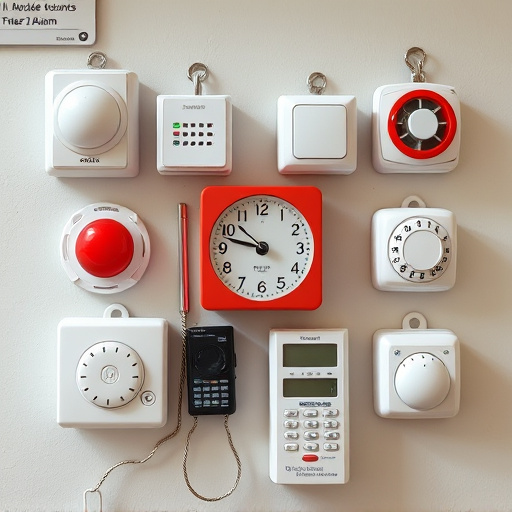Lone workers face unique risks including accidents, medical emergencies, or hostile situations due to lack of supervision. A Self Defense Alarm With Panic Button offers a crucial solution by enabling instant distress alerts and emergency service responses with just a press of a button. This technology enhances safety, empowers individuals, and saves lives in isolated or high-risk environments, as demonstrated by case studies and real-life examples. Integrating this tool into safety protocols, along with regular training, significantly reduces risks for lone workers.
Lone workers, from construction sites to healthcare professionals, face unique risks. Understanding these hazards is the first step towards ensuring their safety. This article delves into crucial strategies, highlighting the transformative power of self-defense alarms with panic buttons in mitigating dangers. We explore comprehensive safety protocols and present compelling case studies showcasing how these life-saving alarms have made a tangible difference. By implementing effective measures, we can create a safer environment for those working alone.
- Understanding the Risks of Lone Work
- The Role of Self-Defense Alarm with Panic Button in Safety
- Implementing Effective Safety Protocols for Lone Workers
- Case Studies and Success Stories of Life-Saving Alarms
Understanding the Risks of Lone Work
Lone workers, by definition, operate independently without immediate supervision or backup. While this autonomy offers numerous advantages in terms of efficiency and flexibility, it also introduces unique risks that must be acknowledged and mitigated. Without the immediate presence of colleagues or supervisors, lone workers can face various hazards, including unexpected accidents, medical emergencies, or even hostile situations. These scenarios underscore the critical need for robust safety measures to protect individuals who work alone.
One effective tool in the arsenal against these risks is a Self Defense Alarm With Panic Button. This device serves as a powerful personal security system that empowers lone workers with an instant means of alerting others in case of distress. By simply pressing the panic button, users can trigger an alarm that not only scares off potential threats but also quickly notifies emergency services or designated contacts, ensuring swift assistance and potentially saving lives.
The Role of Self-Defense Alarm with Panic Button in Safety
In the context of lone worker safety, a self-defense alarm with a panic button serves as a powerful tool for emergency situations. This device allows individuals working alone to swiftly signal distress and alert authorities or colleagues in case of peril. With a simple press of a button, a loud alarm is triggered, drawing attention and providing an immediate response. The panic button is designed to be easily accessible, ensuring that help can be requested quickly without the need for complex procedures.
The self-defense alarm with a panic button plays a crucial role in enhancing personal security, especially for workers who are regularly isolated or in high-risk environments. It empowers individuals to take control of their safety, enabling them to defend themselves and request assistance promptly. This technology has proven to be invaluable, offering peace of mind and potentially saving lives by facilitating faster response times during emergencies.
Implementing Effective Safety Protocols for Lone Workers
Implementing effective safety protocols is paramount for protecting lone workers, who often face unique risks due to their isolation. A crucial component of any comprehensive safety strategy is a self-defense alarm with a panic button. These devices empower workers by providing immediate assistance in emergency situations. With just a press of a button, fellow colleagues or emergency services can be alerted, ensuring swift response times.
By integrating such technology, organizations can enhance their lone worker safety programs. Regular training on the use and importance of these alarms should accompany their implementation. This includes scenarios for optimal deployment, recognizing when to activate them, and understanding potential delays in response. Such proactive measures significantly reduce risks and promote a culture of safety awareness among isolated workers.
Case Studies and Success Stories of Life-Saving Alarms
In recent years, case studies and success stories have highlighted the transformative power of life-saving alarms designed for lone workers. These devices, often equipped with a self-defense alarm and panic button, have proven to be invaluable tools in high-risk environments. For instance, in the construction industry, where workers frequently operate in isolated sites, a study showed that the implementation of these alarms significantly reduced response times during emergencies, leading to a marked decrease in potential fatalities.
One notable example involves a remote maintenance worker who, while performing repairs in a desolate area, encountered an unpredictable situation. With quick thinking and the aid of his personal alarm system, he was able to trigger the panic button, instantly alerting emergency services and providing crucial time for assistance to arrive. Such narratives underscore the importance of having a reliable self-defense alarm with a panic button as a last line of defense for lone workers, ensuring their safety and peace of mind in uncertain circumstances.
Lone workers face unique challenges, but implementing safety alert systems like self-defense alarms with panic buttons can significantly enhance their protection. As demonstrated by successful case studies, these devices have proven life-saving in high-risk scenarios. By establishing robust safety protocols and incorporating modern technology, employers and individuals can ensure the well-being of lone workers, fostering a safer environment for those who operate independently.
